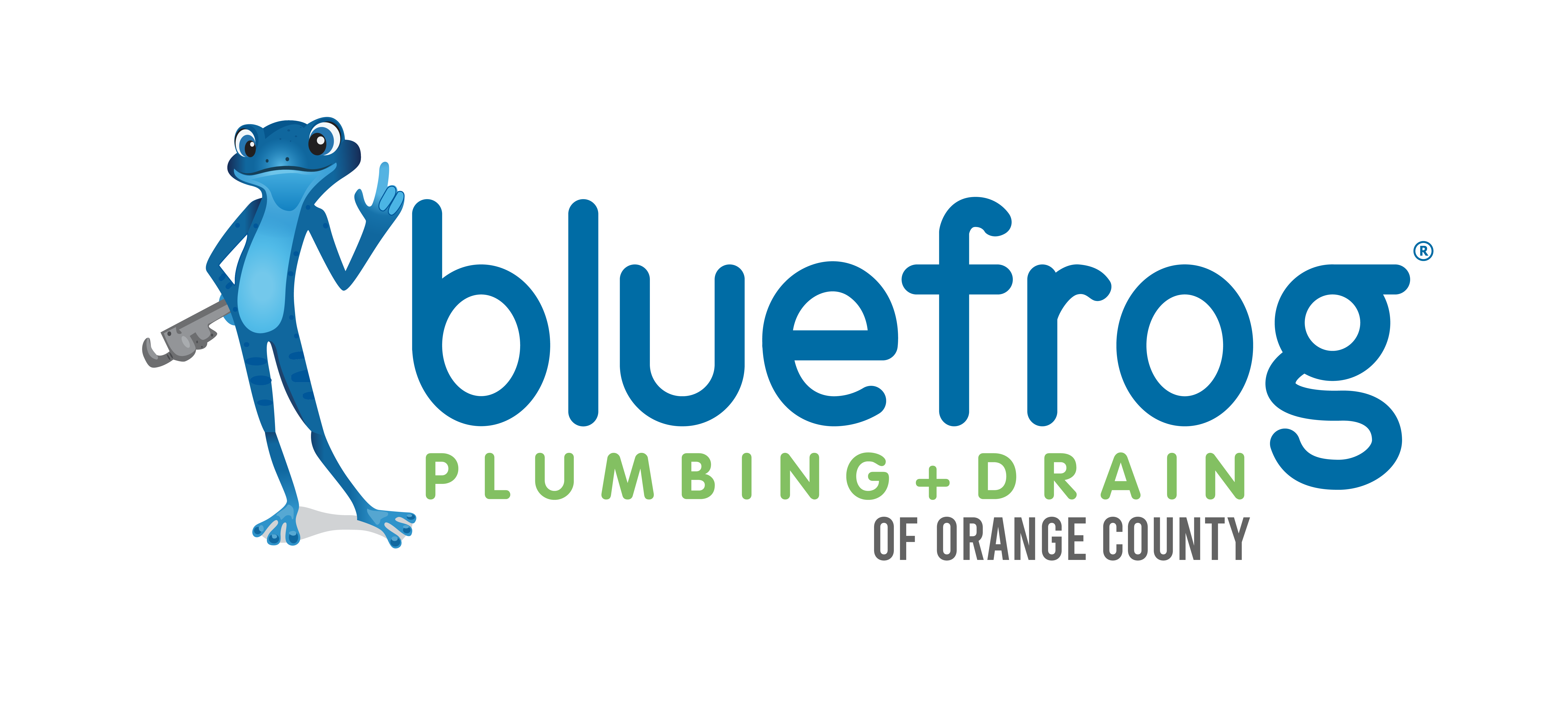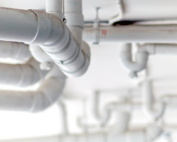Water enters your home from the city’s water supply. This treated water is pressurized and pumped from the street to your home through a water metering device to record usage and a pressure meter to ensure the pressure is within an acceptable range. The water flow then splits into cold water supply lines and hot water supply lines. While both hot and cold lines serve to deliver water to your home, these lines require different pipe materials to meet varying temperature and pressure requirements.
In this article, we will look at the hot and cold service line functions and how they differ. We will learn the various pipe material available for water service lines and take a look at the most common issues water service lines face. We cannot live without clean water and these supply lines are how water enters and is distributed throughout our homes.
Hot Versus Cold Water Supply Lines
Cold water supply lines bring fresh water to each individual water-using appliance as well as all plumbing fixtures in your home. They also supply water to outdoor features such as irrigation systems, pools, and spas. These lines are installed in straight lines, using 90-degree angles, and with a slight downward slope to enhance the ease of water flow.
The hot water service line splits off from the water main and flows directly to the water heater where the heating element heats the water for use in sinks, tubs, showers, and appliances such as washing machines and dishwashers.
Certain plastic pipes such as cross-linked polyethylene (PEX) or chlorinated polyvinyl chloride pipe (CPVC) are best suited for hot water service lines as their composition enables them to transport water at higher temperatures. Other plastics, such as polyvinyl chloride (PVC), are unable to handle higher temperatures so are not used in this application. Most homes will have a combination of plastic and metal pipes used for hot water supply lines.
Common Water Line Materials Used
All homes have water supply lines to bring in fresh water but each varies in the pipe material used. In many cases, more than one type can be found so having a general understanding of the pipe materials available can be helpful.
Water supply lines can generally be classified into two groups: metallic and non-metallic materials. Whichever type exists was chosen as the best choice to ensure pipes that are durable and long-lasting bring safe and clean water to your home.
Metallic Pipe Material
Here are the different types of metallic pipes used for water lines…
Copper: Copper piping is a very common pipe material for water supply lines. It has the capability to carry hot or cold water and is resistant to the effects of corrosion. Copper pipe has a long lifespan of more than 50 years but it must be sleeved if it is being used outdoors as soil contact can cause damage to its structure. Copper pipes come in 3 thicknesses called M, L, and K. These letters refer to the thickness of the pipe with K being the thickest and most durable and M the thinnest.
Galvanized Steel or Iron: This type of water supply line requires that the pipe’s interior be coated with zinc to reduce rusting and slow the process of corrosion which extends the life of the pipe considerably. Older homes with galvanized pipes found once the zinc coating wore away the pipe corroded and leaked. These types of pipes are being replaced with either copper pipe or plastic PVC or CPVC.
Non-Metallic Pipe Material
Here are the different types of non-metallic pipes used for water lines…
Chlorinated Polyvinyl Chloride (CPVC): This is a strong thermoplastic material capable of transporting hot and cold water. It is immune to damage from water that has been treated with chlorine and can tolerate higher temperatures better than a PVC pipe.
Polyvinyl Chloride (PVC): This type of pipe comes in different thicknesses which are called schedules. The most common schedules are between 40-80 where the larger the number equals a thicker material. This pipe is used only for cold supply lines. It is inexpensive to purchase and install and resists rust and corrosion. There are 4 flexible types of PVC:
- PVC with a braided nylon exterior
- PVC with a solid nylon outer sheath
- PVC with a tough flexible polymer plastic sheath
- PVC with a double-layered polymer and stainless steel fibers
Cross-linked Polyethylene (PEX): This highly durable, corrosion-resistant material is used in hot and cold water supply liners. It is highly favored as it can be threaded through old, damaged pipes so it is good for repiping jobs. PEX cannot be tied directly to a water heater so it must be buffered with a copper connection.
Polypropylene (PP): This pipe material can be joined using heat and pressure so no solvents are needed making this more eco-friendly. It has few health hazards but some leaching concerns have been noted. This material is used for hot and cold water and is resistant to hydrostatic pressure which can damage pipes. It also boasts a long service life along with easy installation.
High-Density Polyethylene (HDPE): Chemical and corrosion resistant, this pipe type is highly utilized for hot and cold water. It is lightweight making it easy to transport and install. It too has few health hazards although some studies are showing leaching of some carcinogens.
Polyethylene of Raised Temperature (PE-RT): This pipe material is similar to HDPE but can withstand higher temperatures. This pipe is durable, flexible, lightweight, and requires few fittings making it less prone to leaks. It can transport hot and cold water.
Common Problems
You may reason that since clean water is flowing through the supply lines they never experience issues but that is not the case. Hardwater rich in minerals such as calcium and magnesium can lead to what is known as limescale. Limescale is a chalky white deposit that accumulates on the interior of plumbing pipes. As the limescale accumulates, the interior diameter through which water flows is reduced leading to decreased water pressures and other damaging issues.
Another issue affecting water supply lines is created by iron bacteria. Iron bacteria produce a slimy substance called biofilm that can collect and clog water supply lines. This can also create conditions where other disease-causing organisms can grow.
Wear and tear on aging plumbing can add undue pressure on weather supply lines causing them to leak or burst. A failed pipe can ruin the infrastructure of a home without the inhabitants having any knowledge. Leaking plumbing can also lead to mold and mildew growth affecting the health and well-being of family members creating respiratory issues, memory loss, and other health risks.
Older pipe materials have added to health concerns where lead or galvanized steel pipes have caused great harm. Even the newer plastic pipes are showing signs of leaching chemicals into the water which are harmful.
Need A Plumber In Orange County?
We have learned how clean water enters our homes and is distributed to all water-using appliances and plumbing fixtures so we can bathe, cook, clean, and perform normal activities that require water. The use of hot and cold service lines enables us to take a hot bath or run the washing machine to clean our clothes.
We examined the various types of service line materials and learned some of the advantages and disadvantages of each.
Common issues with supply lines were discussed and gave us a clear overall understanding of water supply lines and how they improve the quality of our lives and ensure our homes remain safe, comfortable, and functioning at full capacity. `
Contact our team of plumbing professionals today to schedule an appointment!

Slab Leaks: A True Plumbing Emergency
Home building following World War II was aggressive, so many houses were built on cement foundations to reduce the time it took to build them and to keep costs at a minimum. They were
How To Extend The Life Of Plumbing Pipes
A plumbing system consists of a complicated series of pipes, fixtures, and appliances that provide the infrastructure to run a well-functioning home. In this article, we will focus solely on plumbing pipes and ways
3 Silent Signs You Have A Plumbing Problem
Some plumbing issues announce themselves with a fury such as a drain backing up with sewage or a burst pipe, while others remain silent and destructive. In this article, we will reveal 3 signs



